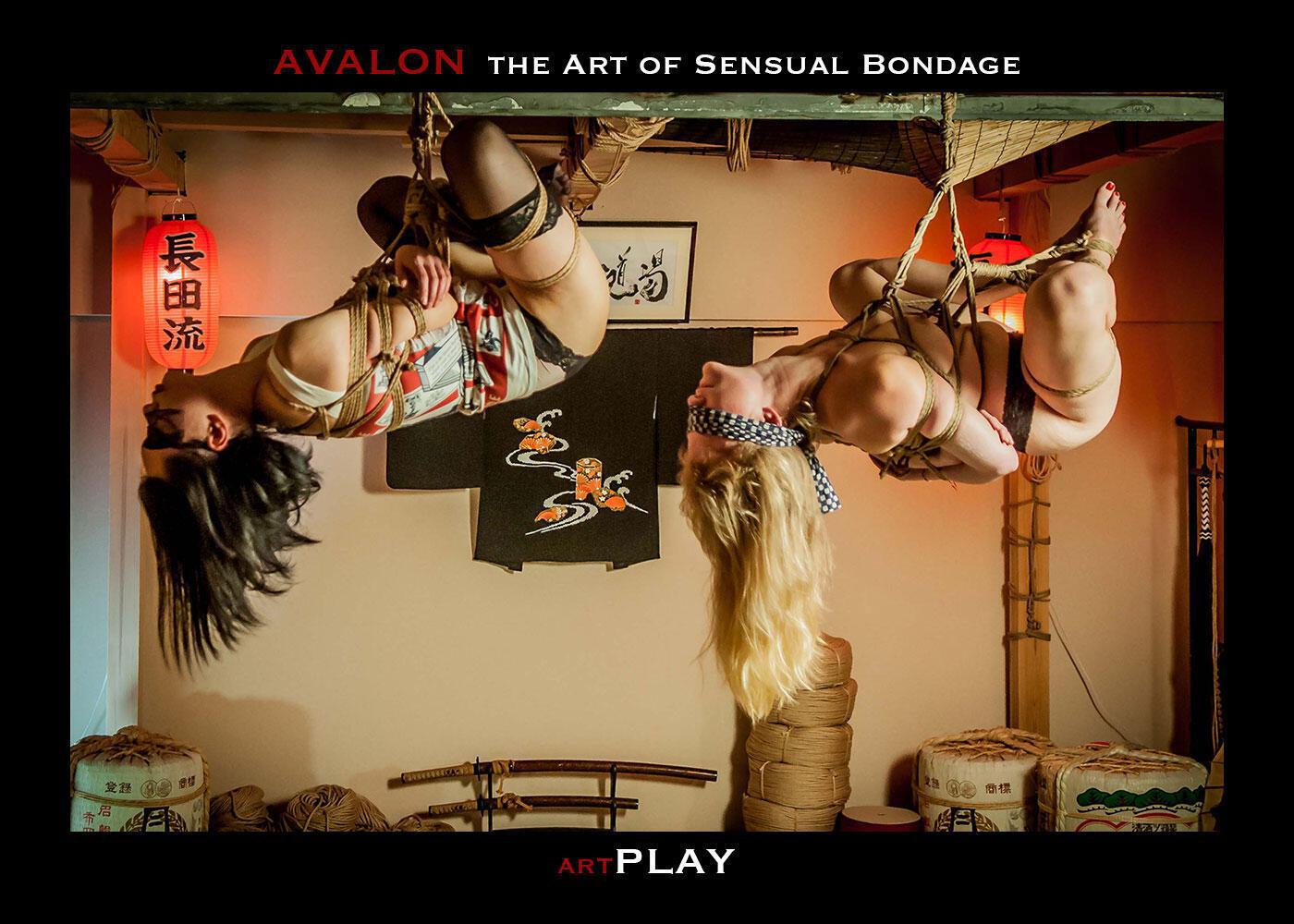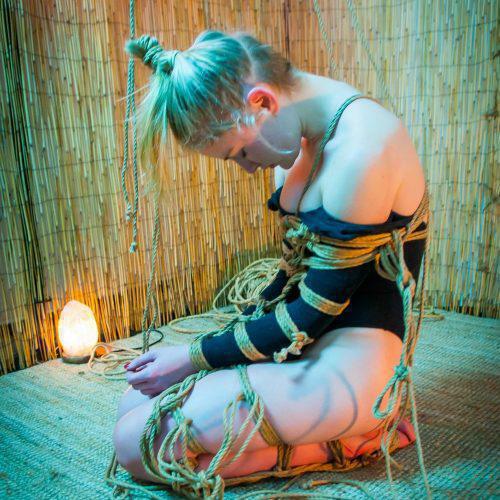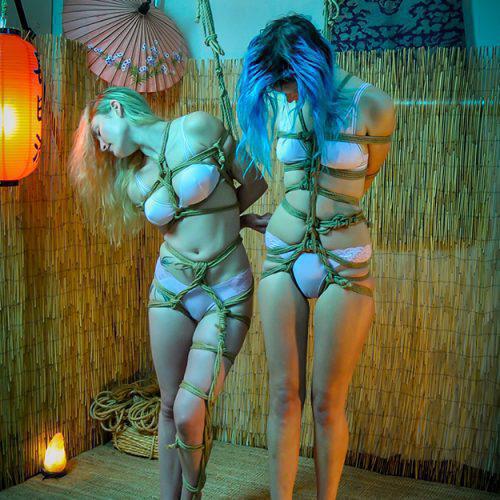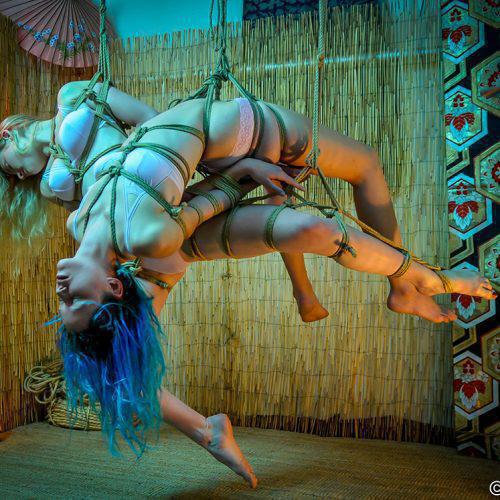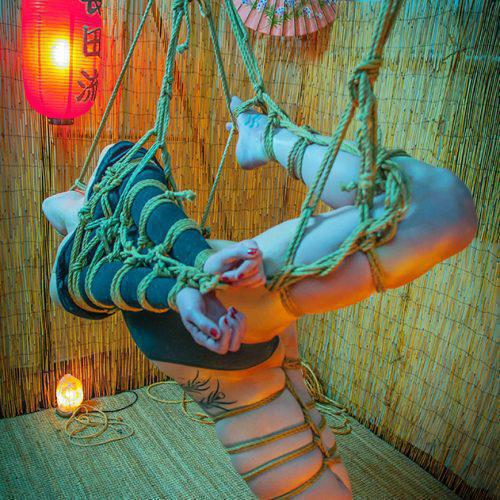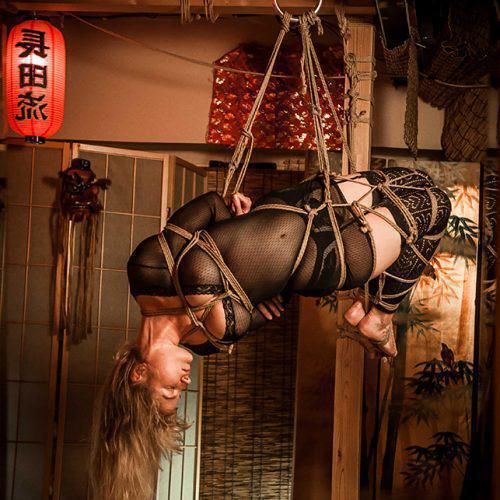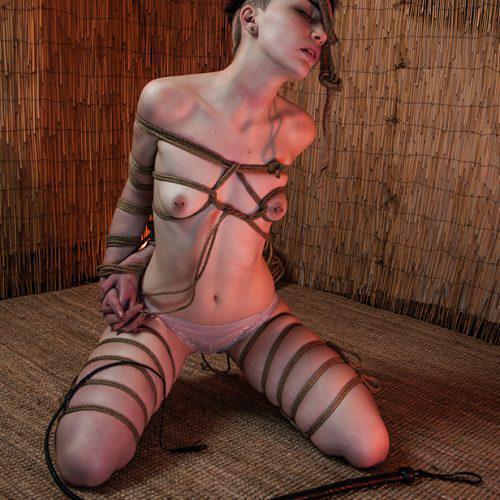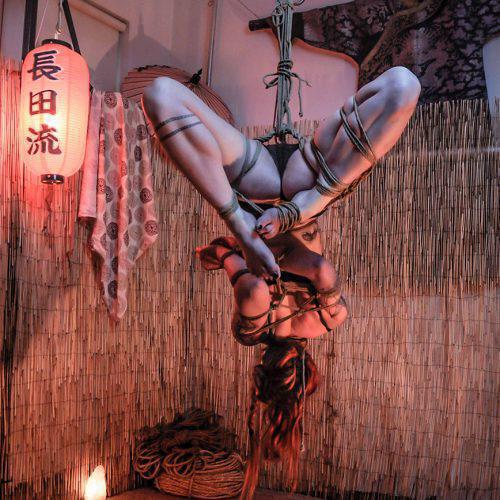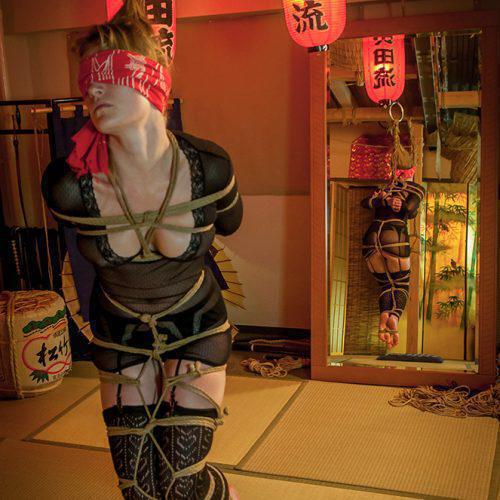
Art photography Studio Prokopiou
November 5, 2017
Karina Akopyan kinky folk art
November 13, 2017
artPLAY SHIBARI ART…LET’S START PLAYING!
AVALON- is a rigger, photographer, performer and a creative innovative rope artist that merges art, bondage, sensual play and traditional Japanese Shibari. Avalon has developed his own distinctive style which is fluid and sensory, forming a communication with his models via rope he incorporates sensuality and sensitivity into his rope work. We are very happy to present some intense, vivid and sensual imagery tied and captured by Avalon. artPLAY is also very honoured to have Avalon talk to us about the traditions of Shibari in Japan as well as explain about his personal experiences and practices in a very detailed and playful way. More stunning images from Avalon are coming soon in ISSUE I of artPLAY.
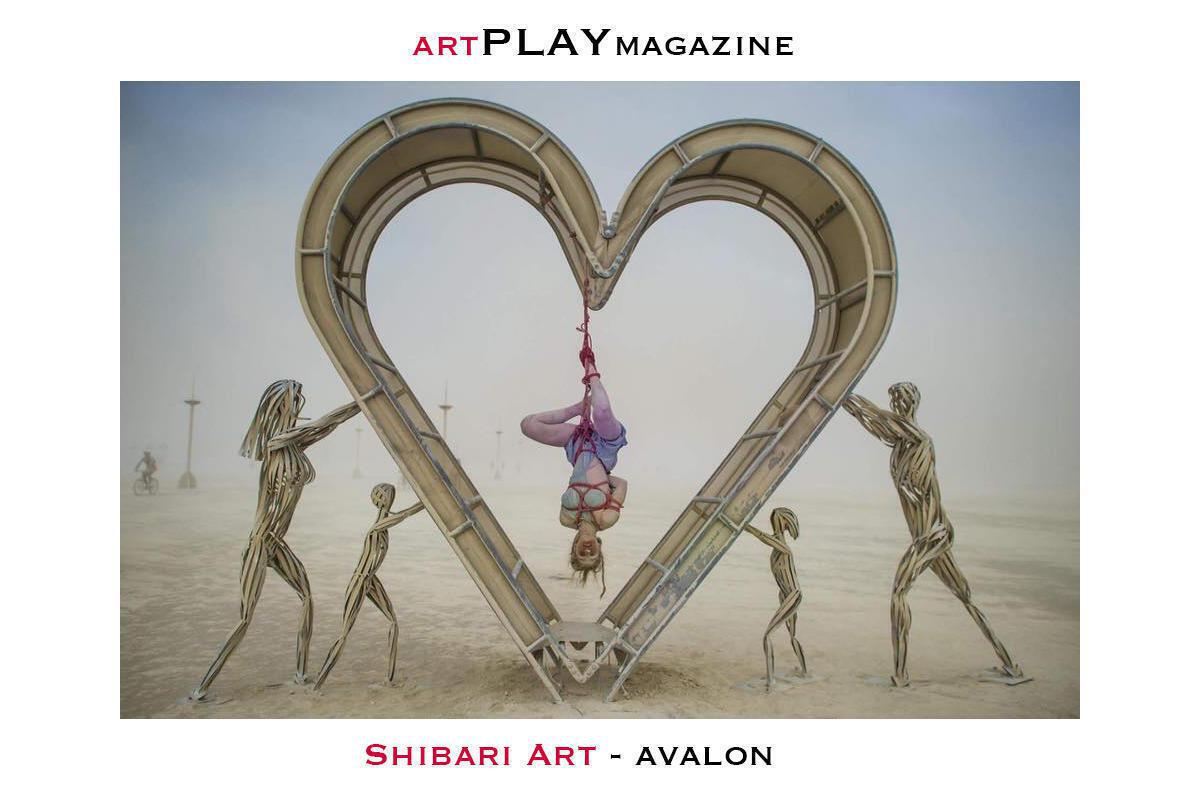
“Burning Man” Festival, ropes by Avalon, art installation by Artist Shane Pizner, Model: Jenna, Photo Juan P Zapata
“My recommendation for anyone wanting to get into Shibari is to get informed. One needs to be able to shift through all the porn and rubbish on the web, but there is also a lot of good information out there. One needs to find the right instructor as well. There are a lot of quacks out there, but there are also many great rope groups emerging all around the world, with a little homework its not too difficult to find them. Other than that, there are no rights and wrongs in rope; there is only safe or unsafe.”
rigger and all photos by Avalon
- Model Jenna
- Models Jenna and Vegan Princess
- models Jenna and Vegan Princess
- model Jenna
- Model Jenna
- model Chelsey
- model Jenna
- model Jenna
“Trust is an essential element in rope, that trust must never be broken as the person been tied need to feel 120% safe and taken care of otherwise they will not be able to let go and fully enjoy their experience. When I tie, I go into my own space. It’s probably a form of meditation for me.”
Shibari notes by Avalon
Shibari is a sort of modern version of an ancient Japanese tradition or craft, if you like – it’s common name is Japanese bondage (Kinbaku or Shibari).
The most unfortunate thing is its name, because people associate it with western style bondage, which is mostly about BDSM and tying someone up to do something nice or nasty to them. In my view, that’s without much depth, Japanese bondage is like a millefeuille cake, thousands of layers, that make this practice incredibly profound and infinite, in the pursuit of acquiring all the different elements of this artform.
The origins of this art are due to the fact that Japan didn’t have much iron. Most of the iron they had, went into making weapons, such as swords and tools, when it came to restraints they did not have handcuffs and chains, they used rope. And like all things Japanese, when they do something they put an incredible amount of style and craft into it. So rope was what was used by the Samurai for restraint, they would tie their prisoners in intricate and unique ways, especially when presenting the prisoners to their Lord, bound in very specific ways. All of the different Samurai clans would have different patterns and styles of tying, the men were tied according to their rank, according to whether the Samurai wanted to honour or humiliate them, while the women where tied to enhance their beauty, as the more beautiful they were , the more they would get rewarded, but also in ways to let them know in clear terms, that they would now have to submit to the their new Lord and owner.
So there was a lot of ceremony around it, and this has permeated into the current performances.
All of this got left behind when the Samurai where disbanded and the art of tying was kind of buried for a while. In the Twenties there was a Japanese artist Ito Seio who started tying up women, especially his wife and painting them. He was known as a bit of a sadist but he created this art, it soon became an underground form of cult art, however, as a result he revitalised the use of rope, Kimbaku slowly crept up in two different directions. One direction was into the porn world, where the money is, but the other was into the more artistic performance art.
I discovered about Shibari in an odd way. In 1985 in Paris I was invited to a private party in a club and it was the first time I saw a Japanese Bakushi (a rigger in Japanese) perform Shibari.
I was flabbergasted to see this process and the beauty of the performance, I was especially intrigued by the effect that it had on the person being tied. There was obviously this form of submission but the way the Bakushi brought out the beauty in the woman through expressions and positions – it was incredible.
So I started trying to look into it but back then there was no internet so it was difficult. Then in 1990 I was in Tokyo for a month on a business project. I was desperately trying to get information but I was getting thrown out of these clubs . They were saying “No, Gaijin (foreigner). Not for you.” It wasn’t until a fair bit later that I crossed paths with this gorgeous performer, half-French and half-Japanese called Satomi. She was in Sydney doing a workshop in Shibari and that revived my interest. I took some private classes with her and started tying properly and I decided it was definitely something that was for me.
I was attracted to the beauty of the form of communication that I find just so intimate, but it is done in public, there’s just something so intense about that. It’s a very powerful tool for communication on a deep level. And even to this day, the more I learn about it, the more drawn in I am to this world. I just keep realising how little I know about it. There is such a depth in the practice
One needs to be patient, it is like learning a music instrument it does not happen overnight. Some like to have precise patterns and ties in mind before they start I do not, I always improvise, even when I perform. Also for that reason I never repeat the exact same tie twice. That’s partly why I started photographing my sessions. Every time I finish a tie, I have no idea how we got there or how we did it.
I do the same with my cooking too. There might be a similar dish, but the exact ingredients will change each time, it’s the moment and that creates the flavour. In rope you just create these beautiful shapes, positions and expressions, these will vary depending on the moment .
The learning process is very similar to martial arts in a way. You find your master and you learn the katas – the different forms and styles of tying the rope. You have to choose your school and then get accepted by that school, which is not a simple as it may seem. And once you are accepted you have to go through the paths and learn gradually. One of the ways in which we learn is that the student has to steal the Master’s secrets. Nothing is given on a silver plate. You have to earn what you learn. You really have to work your way up there. Traditionally in Japan the student would only watch for the first couple of years, then for the next few years they would be allowed to untie and in this way they could start stealing the secrets. But now things are not so strict. The world is moving quicker so the apprentice role has changed quite a bit. But still a good Master won’t teach you anything until he is convinced that you are ready for it. I have been going to Japan two or three times a year for the past ten years to study with my Masters.
I have been very privileged I have established great relationships with some of the greatest Bakushis in the world, I often stay with them when in Japan and they stay with me when they visit Australia to run workshops here. To get to know them at this level, it’s just amazing. One gets to learn about and appreciate their attention to detail and the pure perfection in everything they do, the consideration and adoration for the people they are tying. It’s absolutely stunning; very inspiring for me.
The problem is that now everyone wants to know it all in three days and become a Master in four.
I have only been teaching now for about four or five years and actually I still don’t consider myself a teacher. I consider myself a student and I guess it will be that way for a long long while. I have come to the conclusion that there are two types of people that get into rope. There are those who do it for the right reasons: to explore this form of communication, to explore this culture, and are humble about it and are not in a hurry. And then there are those who do it because it’s cool. It’s a way to get to the chicks. I don’t waste time with them. It’s pure pleasure for me, not a business. I started teaching only because I was asked to. I do see a lot of people who are being badly taught and it gives Shibari a bad name and can hurt people Luckily there is a great number of riggers now in the world that understand that physical and mental safety is paramount. It is however important that we are talking about bondage, it’s not macramé. It is a risky practice, like some extreme sports, one should expect and be made aware that there are risks, But I guess it’s far safer than say riding a motorbike.
A rigger has a physical and emotional responsibility toward, the people they tie, these men/women are in a very tender and vulnerable places in themselves, it is important that a rigger understands the responsibility of holding somebody in that emotional state.
This is actually one of the most fascinating aspects for me. It’s very intense. It can awaken some dark thoughts or experiences and there is a shared responsibility between the person tying and the person being tied.
One of the main things it to make sure that there is a clear channel of communication open between
the person tying and the person being tied before during and after the rope session. It all begins with the intent. That’s when the whole thing starts. So if there are potential issues, the rigger should be aware of them or of the potential for them arising. It’s easier said than done though because if someone has dark issues, the last thing they want to do is to talk about them. But yes, a good rigger is one that reads the person they are tying before and after and understands what needs to be done or not done, and to sense the limits and never push them over and above that limit.
The gift of being allowed to tie someone is a beautiful gift and it puts their body and mind and soul in your hands and that should not be betrayed. There should be no victims. No signs should be ignored.
It makes no difference whatsoever if I am tying in front of one person, a hundred or none. I also have to rely on gut feelings. All of my focus is there… yes some of my mind is on the technical aspects but the greater part is focussed upon my partner, on reading them. It’s like I am telling a story to my partner and that story will change depending upon the person I am tying. I can spend five minutes or even a half hour gauging where that person is at and what they need. None of this is through conversation, just through touch. Even with my regular partner this is true.
It might sound kind of superficial, but I am actually in love and adoration of the person I’m tying, it can be very intimate especially when you are tying someone for the first time, its very powerful.
I have been doing it for a while and it keeps on getting better … I highly recommend it , you will not see me playing golf, that’s for sure
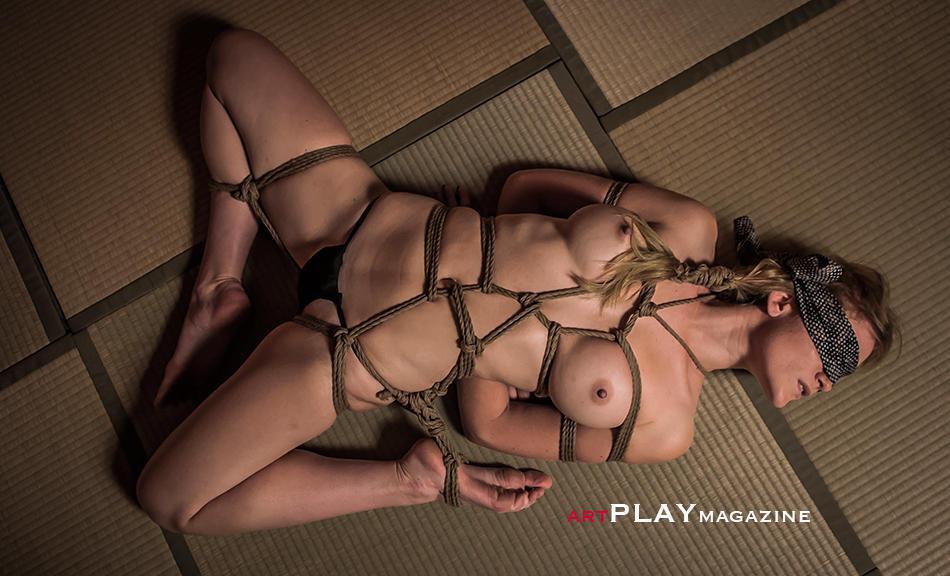
website: https://123avalon.tumblr.com/
Instagram: www.instagram.com/123avalon
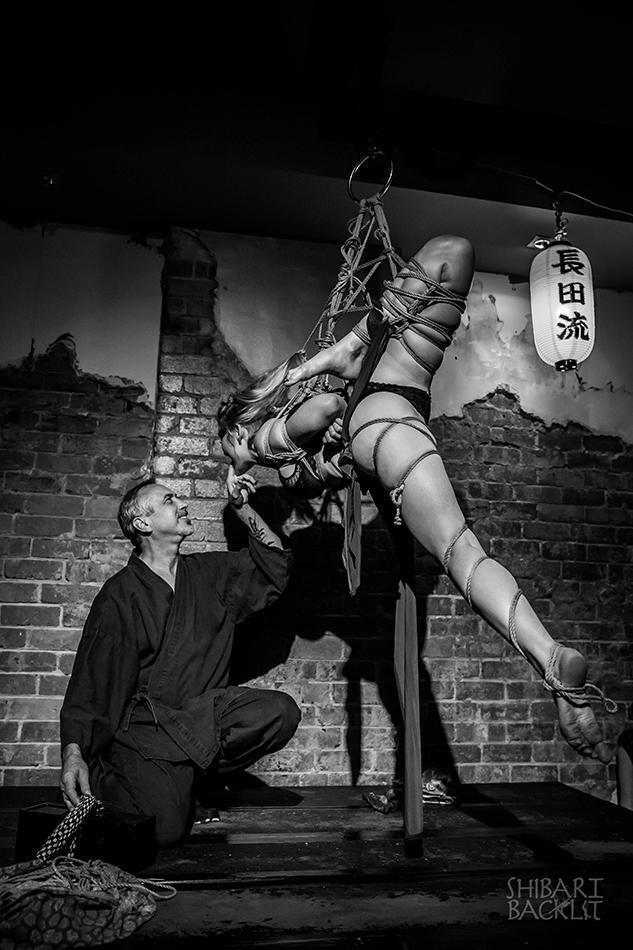
performing at ” Bound by Avalon ” photo by Shibaribacklit
(C) artPLAY is a source for the creative minds

